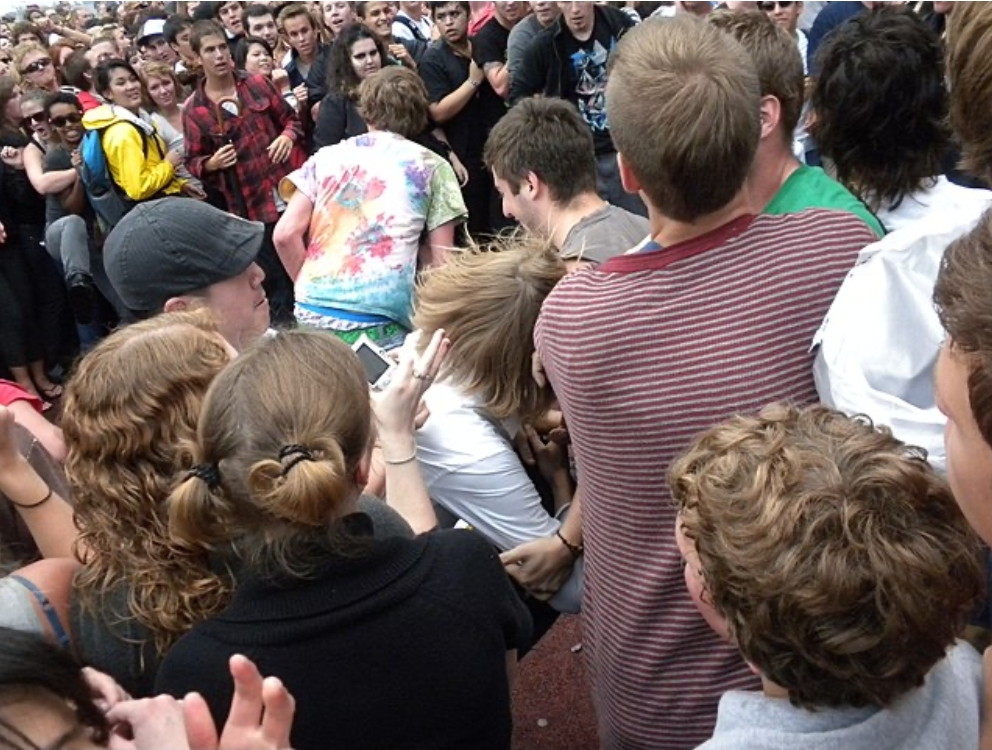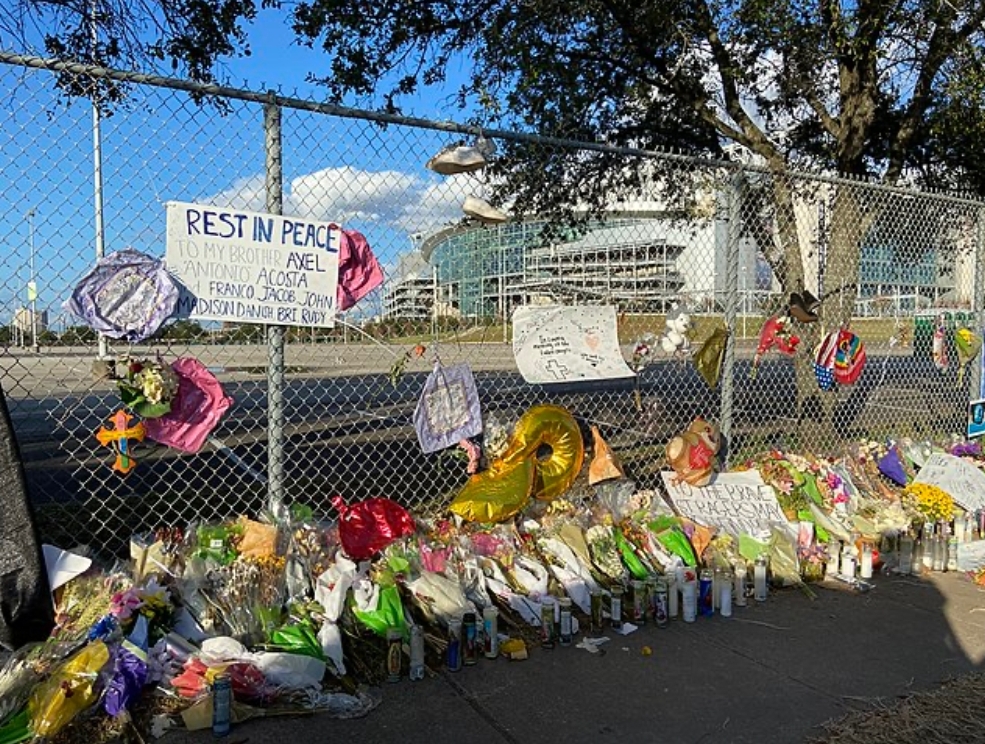By Lizeth Moctezuma, Staff Reporter
May, 2022
Every story starts the same. It’s crowded. People beginning to push, start shoving. It’s tight, almost getting hard to breathe. And then: the beat drops. Suddenly a dam of people rushes forward, moving closer to the stage than ever before. Having little to no space between one another, bodies begin to sway and fall amidst the heat. Pushing back to hold balance, loud noise blares all around and it becomes a fight, unwilling to lose. How long are you expected to endure until a wave of relief washes over as the music comes to a close? The restless crowd falters and dies down. But the adrenaline still refuses to waver, body on guard as if afraid it might occur again.

With such experiences being common- especially in male-dominated crowds- people tend to brush them off much more easily. Yet no one ever questions fans who inflict said dangers in the crowd as if refusing to address the root of the issue. As if the men rallied together shoving one another and those around them without a care of personal space are being fair. No one wonders why it has been so ingrained in us: why men are given much more leeway when it comes to aggressive behavior, why we are so conditioned to believe this is normal.
This aggression turned deadly at Astroworld in Houston in November of 2021 at a concert by rapper Travis Scott. In that tragedy, 10 deaths were reported and hundreds injured. Scott is known for encouraging raves and risky endeavors among his fans, including encouraging them to force their entry into the festival. And while LiveNation Entertainment, the promoter of the concert, failed to meet safety criteria, responsibility evidently falls on fans and Scott himself. The worst came out of everyone, including those who gave up their morals to shove and walk over one another to be a foot closer to the stage, throwing their humanity aside. Thousands shared their stories on social media depicting the horrific and unsafe protocols that took place: a lack of security, overfilled infirmaries, camera people ignoring cries for help. Everything set up the audience for failure. Scott has fueled these unsafe actions before, putting the safety of his fans at risk in the name of making a name for his concerts.

Artists hold mass influence over their followings and must acknowledge that there’s a sense of responsibility to use their platforms in a manner that will inflict no harm to others. And while undoubtedly there are bad apples in any sizable following, normalizing these behavioral patterns as odd “habits” only sets an expectation to fear. It’s when physical violence is not only involved but encouraged by these artists themselves. It’s when lives are being lost at places of entertainment that promised safety.
The fault also inevitably falls on those of us in concert audiences, and we must be willing to hold one another accountable. Viewing aggression as a characteristic trait feeds into the idea that it’s a normal occurrence, as if it could never change. But the more we look away, the more frequent these tragedies fly by. To criticize in the moment and move forward opens conversation for regulations set in place, and what we should expect of each other in person. Refusing to allow the same situation to occur, it’s up to us to keep places safe.